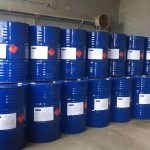Dichloromethane uses
solvent
Solvent is the most important use of dichloromethane. Dichloromethane has broad-spectrum solvency, low boiling point, relatively low toxicity and relatively best reaction inertness, making it the most frequently used organic solvent in organic synthesis. Its status as a solvent is almost equivalent to that of water in inorganic salt chemistry.
raw materials for organic synthesis
Dichloromethane is inert due to stereoelectronic effects and usually does not participate in chemical reactions. But it can also participate in the reaction under certain conditions. In the industry, there have been accidents in which residual dichloromethane and sodium azide reacted in N,N-dimethylformamide to generate diazide methane, which caused factory explosions.
Reduce caffeine content
After the green coffee beans are treated with high-pressure steam, the water content is adjusted, and then immersed in dichloromethane to extract the caffeine in the coffee beans. The processed coffee beans are then roasted at high temperature to volatilize the dichloromethane to produce decaffeinated coffee beans.
Dangerous
Toxic protection
Dichloromethane is more toxic, but it wakes up quickly after being poisoned, so it is also used as an anesthetic. Irritating to skin and mucous membranes. Absorbed mainly through respiration or intestinal tract, rapidly enters the bloodstream, and metabolizes to produce carbon monoxide or carbon dioxide.
The oral median lethal dose for adult rats is 1.6-2.0 g/kg [3]. The maximum allowable concentration in the air is 0.0005. Wear a gas mask during operation, leave the scene immediately after discovering poisoning, and treat symptomatically.
Seek immediate medical attention if you are pricked by a needle containing methylene chloride.
toxicity
The damage of methylene chloride to the human body is mainly reflected in the nervous system and carbon monoxide poisoning in the human body.
The average outdoor methylene chloride content is mostly below 5μm/m3. However, short-term exposure to dichloromethane at concentrations higher than 1050 mg/m3 (300 ppm) will result in slow behavior and response that will not last.





